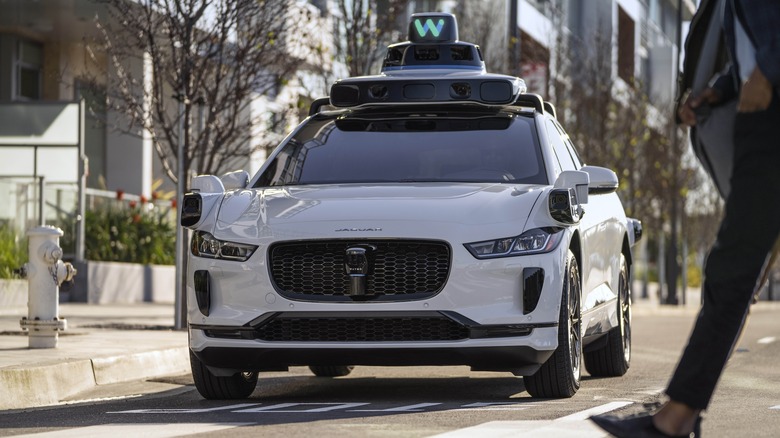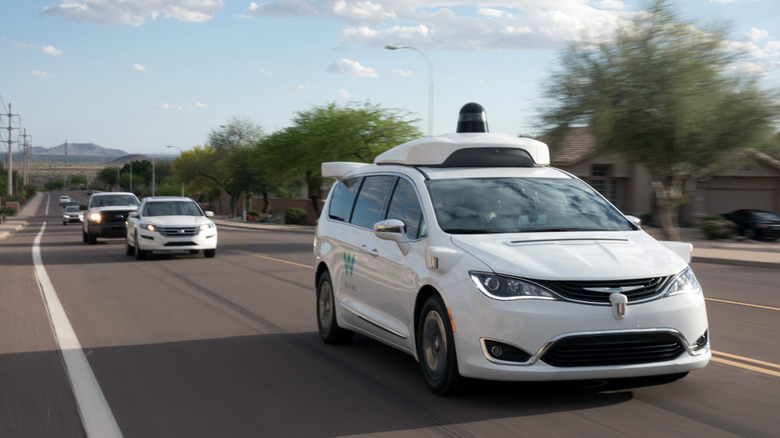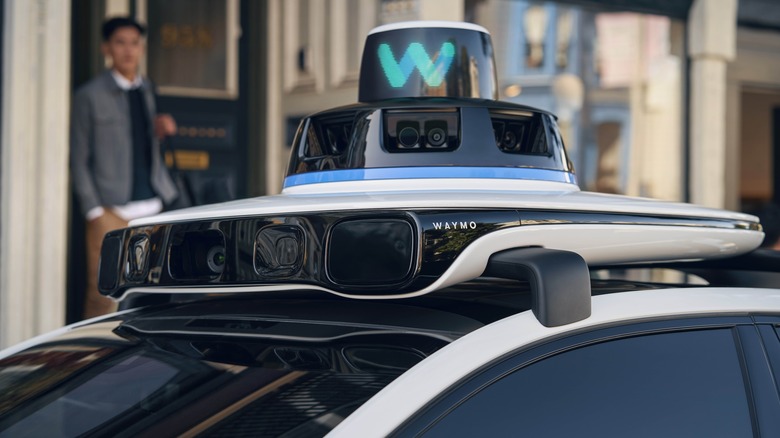The Hidden Obstacles To Autonomous Cars: Human Nature And Law Enforcement
There was a time when autonomous cars — or driverless cars — were touted to be the best thing since sliced bread. These vehicles of the future could drive themselves without human input, and presumably, safely. They promised a future where the arduous, often stressful task of driving could be completely taken over by onboard computers inside the car. All the passengers need to do is sit back, relax, and enjoy the trip. Being free of any human input also meant that these cars could reduce — and even eliminate — accidents caused by human error.
Progress in the development of autonomous cars has been steady, but slow. Even the biggest carmakers are yet to bring fully autonomous cars to the market. As of 2024, most manufacturers have chosen to equip their vehicles with lower-level ADAS (Advanced driver-assistance system) technologies instead of going fully autonomous.
While stopping short of enabling complete autonomy to cars, the ADAS features on these cars include things like blind spot information systems, lane departure warning, adaptive cruise control, and traction control. On more modern cars, active safety features like collision avoidance and automatic emergency braking are among the commonly used features that possess some form of autonomy.
So, what is stopping major car companies from manufacturing cars with full autonomous driving capabilities? The answer isn't simple. We posed the same question to Dr. Laine Mears, Automotive Manufacturing Chair at Clemson University. An automotive expert with vast experience in the industry, Dr. Laine had some interesting insights to share.
Autonomous driving technology isn't there yet
Several advancements have been made in the path towards making our future cars completely driverless. However, Dr. Laine believes that even with these advancements, it is still too early to expect fully autonomous vehicles to adapt to real-world conditions.
"The Technology is just not there yet," says Laine. "Tesla pushed the FSD system out to all of its vehicles a month earlier this year, and many realized that there are still some serious bugs to work out (e.g., wrong turns, overly aggressive maneuvers, failure to yield right-of-way)."
Dr. Laine also believes that any form of autonomous driving technology intended for the U.S. market will need to take into account the diverse driving environment in the country. "One aspect of adoption to consider relative to the U.S. is that there is little standard behavior of drivers; some people like to cruise in the passing lane, fail to keep right, and merge in many creative ways," he says.
These factors should explain why even mainstream manufacturers have strayed away from bringing fully autonomous cars to market. The ones on sale today — namely from Honda with the Legend in Japan, and Mercedes-Benz with certain S-Class models in the U.K. — only support a lower level of autonomous driving (SAE Level 3), which is two levels below what is regarded as fully autonomous driving (SAE Level 5).
And unless we witness some major breakthrough in this field, it is probable that we'd mostly witness cars adopting lower levels of autonomous driving tech (like ADAS) before moving on to fully autonomous vehicles.
Then there's the legal barriers for autonomous driving
While research on fully autonomous vehicles has been underway for a really long time, as of April 2024, there are only a handful of places where people can travel inside driverless cars. In the U.S., these places include Phoenix, San Francisco, and Los Angeles, where Google-owned Waymo operates these services.
It is pertinent to note that none of the autonomous cars driving in these cities meet the requirements needed to be termed "fully autonomous." Waymo's driverless cars are all rated for SAE Level 4, which makes them autonomous, but are restricted to a certain geographic area.
One of the major reasons for the slow proliferation of driverless cars are the legal issues surrounding them. Given that the use of driverless cars doesn't fully eliminate the chance of accidents, there is a raging debate on who takes responsibility for an accident caused by a fully autonomous vehicle. Waymo is currently under investigation by the National Highway Safety Administration for over two dozen driverless crashes and traffic violations. Tesla was also in the news recently after it settled a lawsuit brought by the family of a software engineer who died in a crash while inside a self-driven Tesla car.
Nevertheless, given that driverless cars are still in the early stages of their development, the regulations surrounding them are also evolving. This makes it additionally difficult for car makers to make such cars conform to the various requirements prescribed by local regulatory agencies. In the U.S. for example, only some states are open to companies testing driverless cars in their jurisdiction quite unlike markets like Japan and China which have been more liberal in their approach towards driverless cars.


